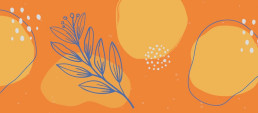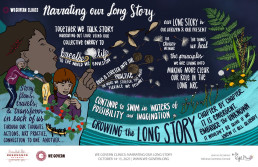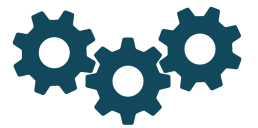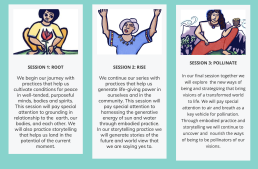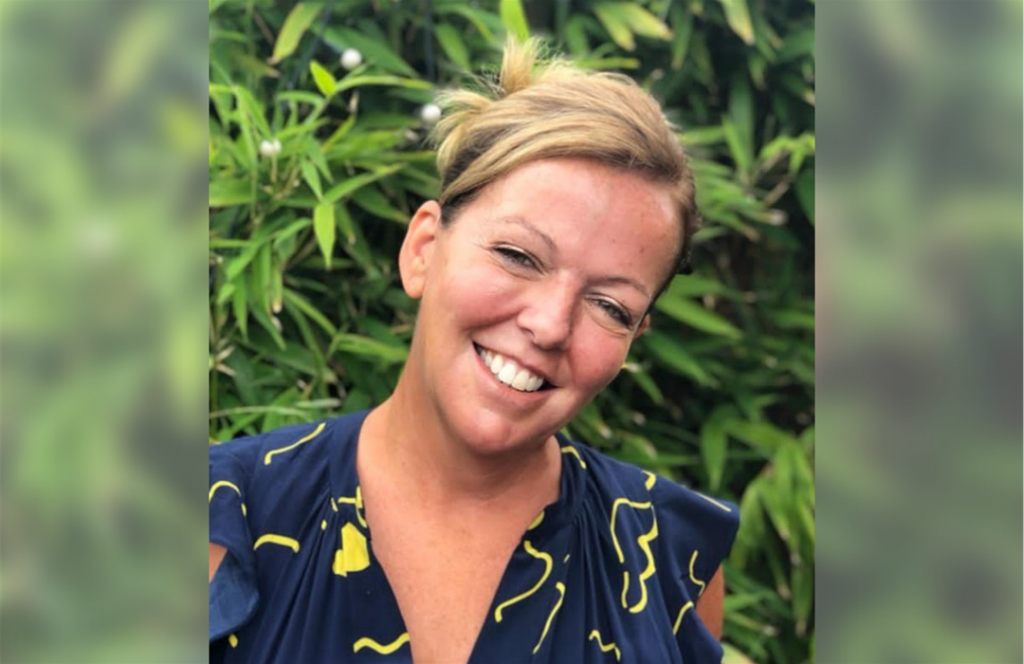Inside philanthropy and networks
Collective Mind hosts regular Community Conversations with our global learning community. These sessions create space for network professionals to connect, share experiences, and cultivate solutions to common problems experienced by networks.

In July 2021, Collective Mind hosted a unique Community Conversation panel discussion about philanthropy and networks. The session featured experts who work across the philanthropic space and have deep experience with networks ranging from global and national to hyper-local levels and across the gambit of social causes. The panel included Heather Hamilton, Executive Director of the Elevate Children Funders Group; Hilesh Patel, Leadership Investment Program Officer of the Field Foundation; and Katie Davies, Manager of Strategic Networks Initiatives with Ignite Philanthropy.
Together, the panelists explored the most urgent topics on their minds as funders and funder organizers for social impact, and talked about the trends they’re observing within philanthropy as it evolves toward more progressive causes and systems-change work. The panel helped elucidate some of the mysteries behind philanthropic decision-making and strategy, and sparked conversation among participants about how networks can reimagine their approach to and relationships with donors.
Highlights from the conversation
Understanding the decision-making structures of philanthropies helps network practitioners see their work through a donor’s lens and ask themselves the questions donors need to have answered. According to the panel, grant seekers commonly overlook the disconnect between program officers (POs) and where high-level funding decisions are made. POs are engaged on the ground, hearing directly from leaders and impacted communities, and have a current view of how the field is evolving to help advise on strategy. But ultimately, the Board of Directors controls the purse strings and sets the strategic agenda, with POsimplementing their decisions. Boards often prioritize questions of financial risk when making strategy and investment decisions, as well as the potential for fiscal return or reward. Among the range of types of foundations, POs will also have different levels of autonomy and instruction and at times won’t have a lot of flexibility in what they can fund. For networks, this can be particularly challenging as the work and value of networks can be amorphous and long-term, presenting more perceived risk from a business point of view.
Furthermore, networks may not necessarily fall into the framework of how traditional Boards think of how change happens. By design, networks work collectively toward a goal or contribute to a solution, rather than being able to specifically claim impact as their own, which makes their value proposition less straightforward and tangible than programmatic outputs and numbers. To demonstrate impact for donors and stakeholders, groups will sometimes overclaim and attribute wins to their own efforts, which misrepresents the work and can undermine the notion of a shared purpose. This can muddle the message of how collective impact happens and its value. It is therefore both on networks to be thoughtful, effective storytellers and have strong mission clarity, and on donors to educate and challenge themselves on their conceptions of the role and value of networks to affect systems change and foster an enabling environment where change happens.
Effective philanthropy requires more and better Board education. At its roots, philanthropy assumes a binary between those doing work on the ground and seeking funds and support, and those with resources who make big decisions on behalf of social change work but have limited practical knowledge or experience of it. This dynamic is challenging to navigate and also problematic. More and more, POs are working to educate Boards, which are often composed of wealthy individuals, about social change and to create change within foundations on the inside. There is emerging interest in the philanthropic space to learn from and with communities of change and to become more responsive and accountable across leadership and decision-making. Networks can help POs in their efforts to push and educate leaders within foundations to understand more about movements, collectives, and networks, and how donors can be more effective partners for change.
One way this can be done is through measurement methods that are more true to life and the work of social change. Donors often miss that funding networks means that progress won’t always be linear or explicit. Not only can fixed metrics and reporting requirements put a burden on grantees and have undue influence on the work, but limiting impact work to spreadsheets and formulaic processes can drive artificial outcomes and stifle the chance to glean real learning and value. For some foundations, there’s a new effort to pivot traditional reporting requirements and formats to be more flexible, conversational, and focused on multi-directional learning. These processes reframe accountability to center what grantees and donors can learn from each other about how the field is evolving, what role they all play, and what progress is being made. Doing the work to understand why networks and coalitions are important leads to understanding the nature of networks and systems change.
Donors are also starting to embrace how the image and dynamics of leadership are shifting through the work of networks and movements. Whereas traditional leadership is marked by an individual with certain, often normative characteristics and the vision and actions they represent, networks and movements center the leadership of groups and shared efforts. In networks, there is often no one leader: leaders are pulled from different sections to be part of broader work, and the model and mission doesn’t prioritize individuals as leaders. These challenges to traditional notions of what leadership looks like both mirrors and goes beyond how the face of leadership is already changing generationally. Understanding networks for how they upend traditional leadership is another way to educate philanthropic Boards about collective action and collaborative leadership.
Miss the session? View the recording here.
Thanks again to our amazing panelists!

Emily is a seasoned nonprofit and social impact expert with 14 years of experience leading social justice organizations and programs from community to global levels. She specializes in program innovation and design, strategy and leadership, facilitation, and peer learning. Among Emily’s career highlights, she has served as Executive Director of a grassroots women’s rights and anti-violence organization in British Columbia, Canada; spearheaded global peer exchange networks and innovative women’s leadership programming; and designed cutting-edge participatory research about GBV in remote and Native communities.
Originally published at Collective Mind
Featured image found here
Appreciate Network Weaver's library of free offerings and resources?
Donate below or click here
thank you!
Reclaiming Choice and Agency in a Networked World
Welcome! We are happy you chose to open this blog post! In this article we will explore:
- The difference between choice and decision; and why awareness of choice matters - as a (fundamental) way to engage with life.
- Different levels of networks & systems and how to navigate the levels with agency.
- How to choose with your whole being - as a means to align your deeper values and actions.
- Exercises and prompts to practice choice as a capacity.
We believe that it can be of use to change agents, social innovators, system entrepreneurs, and curious minds. Most importantly: We invite you to choose to fully engage with the article and share your reflections with us. We have laid out some opportunities to do so on the way :)
So let’s dive right in!
Choosing to Decide
Each day we make numerous decisions, from what we consume, such as food and media, to how we respond to others and to our environments, and beneath all of these decisions are choices. Yet, what is the difference between a choice and a decision? A decision often implies reaching a conclusion you can act upon, in this process something is determined. While a choice implies an act of choosing between two or more possibilities. In this way, ‘choosing’ is a practice of continually aligning toward various decisions. If we zoom out we may see that choices are how we navigate through life and how we arrive at decisions. Let’s take a moment to ponder this.
What was the most important decision you made today?
And what was the underlying choice you made that led you to that decision?
Choosing and deciding are related processes, yes, but they are fundamentally different in their nature. Choosing is relational, it is a process of orienting ourselves towards something of importance, such as our personal values, and what we hold dear. Choices lay out possible paths and open up fields of opportunities. While, deciding is directional; decisions are the concrete steps we take on that path.
If we shift from considering the individual level of choice to the collective level, we can see that human actions are a dominant driving force for what’s happening, and going to happen, on this planet. From this perspective our actions may look insignificant at a larger scale.
But an easily overlooked perspective is that we are not passive consumers or bystanders in the course of history. There is choice and agency everywhere, in the seemingly small moments of our daily lives, in the conversations we have with loved ones, or in choosing, or changing, our careers. Each moment holds an underlying choice we can engage if we choose to.
Now, a common argument is that the challenges we are facing are so grand and complex - that it doesn’t really matter what I intend, do or think.
In this article we will flip this argument around: In a networked world, there is nothing that matters more than what you do. Not only for you and your immediate environment, but also for the world at large. What you do, in turn, is deeply embedded in the choices you make, as your choices shape your orientation toward life.
Engaging with choice can also foster your sense of agency. Agency refers to the ability to direct your own actions in a meaningful way. In the field of systems impact, agency is often the precursor to creating change within our immediate environment or the larger social context we exist within and care about. As we reclaim our sense of choice, we inhabit more of our agency, which in turn enables us to have a greater impact.
Before we unpack this more and dive deeper into the exploration on how to reclaim choice and agency, we invite you to do a little exercise with us, to connect with what supports your sense of choice and agency.
You can follow the steps below or use this mentimeter survey for guidance: https://www.menti.com/txm61jx7f7
(if you use the survey, we will anonymously keep track of the responses - and you can also read through the results of others for inspiration)
- Think of a current situation that frustrates you - where you feel you don’t have choice or agency. This can be something in your immediate environment - or a larger social issue. How would you describe that situation? What emotions are present for you? What is the root cause of your frustration?
- Now, think of a moment in the past where you felt similar, but then experienced some sort of breakthrough - a moment where new opportunities emerged. Enter that moment now. Take a few deep breaths and observe what shows up for you - in terms of images, emotions or intuitions.
- Now consider, what made that breakthrough, that shift, possible? Note down a few words, lines or images.
We will return to this exercise at a later stage in this article.
Agency in a Networked World
We all exist in webs of relationships, which are the most basic form of networks. Networks exist within and around us. In nature we see networks of mycelium, mushrooms and fungi; the internet is a network of networks consisting of computers, routers and webpages. If we consider our bodies we can see that even our brain is made up of neural networks and synapses. Networks show us that it is important to focus on the individual elements as well as the relationships between them.
In essence, referring to our world as “networked” mainly means four things:
(1) We are part of more networks than ever before. Just count the number of initiatives, groups and organisations you are connected to - and compare it to the generation before you.
(2) the networks we are part of are larger in scope than they have ever been. Technology, mainly the internet, has made it possible to decouple social connections from physical proximity, at least to a certain degree.
(3) The networks themselves are connected. what happens within one network impacts others, for example a traffic jam or delayed trains in a transport system can lead to people being late to work.
(4) The networks we are part of, or deliberately not part of, shape our identity and actions. In turn, we also shape the identity and possible actions of these networks, yet usually to a lesser degree.
Let’s explore one aspect further: having agency within a networked world. To distill things a bit, we can say that there are three major levels of networks. For simplicity's sake, moving forward, we will use the terms “network” and “system” interchangeably.
- Individuals: Human beings in their full complexity and wholeness
- Intermediary institutions: Systems we can belong to and that we can shape, e.g. a family, sports club, impact network, or organisation.
- Societal systems / institutions: governments, the financial sector, etc.

Now, there are connections within each system, e.g. between coworkers of an organisation; between systems of the same level, e.g. organisations within an alliance; and between systems of different levels, e.g. an activist group trying to influence a policy.
We each will have varying degrees of agency in relation to the three levels of networks mentioned above. For example, personally fighting financial injustice, individual level, by ignoring letters from the financial department, societal level, is not the most promising strategy. As individuals, we usually have very little leverage over societal institutions and matters. However, joining an organisation, an intermediary institution, that creates financial literacy among disadvantaged groups and lobbies for policy changes, might actually work.
With an awareness of each level it becomes easier to choose which level and interaction you say yes to and no to. Choices are an opportunity to lean in and engage with the networks within and around us. Yet we may often jump to decisions without being aware of the choices that are available to us. This awareness, from our perspective, is the first step towards reclaiming choice and agency.
Choice for Impact
In engaging choice for creating systemic impact, a key question is: What’s the issue or vision I want to contribute to? To achieve that, what is the relevant system that I want to change, and in which direction do I want to change it? Let’s apply what we’ve learned so far, by drawing on the concepts of choice and agency as well as the three levels of systems. To make this more tanglible, you can bring to mind the situation that frustrates you from the initial exercise, and take a moment to think about the societal issues that underlies it.
To move from inertia to agency, we see four levels of choice.
The first choice is about living into your values and allowing yourself to take your inner compass and drive for social change seriously. This can be in relation to a social issue or external “trigger”, such as observing environmental destruction or diversity loss in your area.
The second choice is to think systemically and be strategic, asking the question: what is the relevant societal system I can engage with in relation to this topic? This choice is context dependent and will vary depending on where you live, the resources you have access to, and which systems may be standing in the way of it becoming a reality. For example, there may be a larger societal system that needs to be shifted, such as the energy supply system with its given sources of energy and the extraction of these resources.
The third choice is to engage my agency and seek intermediary institutions to engage in. It’s a choice to be proactive about changing the status quo with an attitude of both realism, “we should do something or else..”, and optimism, “there is something I / we can do”. Taking the example of climate justice, this might result in joining an energy coop or an activist group to influence politics.
Lastly, the fourth choice is to remember the choices above and embody them with joy and a sense of optimism. We can only be effective change agents if, to paraphrase Gandhi, “our lives are our message”.

Our modern day and age provide us with the unique opportunity to use network effects on a global level to contribute to causes we care about. The Four Levels of Choice can serve as a general orientation, acknowledging that it’s rather circular and interdependent than linear in its application.
Another way we can understand the levels of choice is through imagining an iceberg. Part of the iceberg is above water yet the majority of the iceberg exists beneath the water's surface. The part below the surface represents our values, beliefs and mental models, while the part above the surface represents our behavior and actions. Choice is how we align what is beneath the surface, with what is above the surface, therefore aligning our values with our behavior and actions.
We invite you to go back to your personal situation and example, either for yourself or in the mentimeter survey: How can you relate differently to move from frustration to agency? What are the underlying choices you have?
To give the topic more depth, there are two additional perspectives we’d like to explore, starting with ourselves and the choices we have within.
Choices within
Choice is in essence a process of alignment. At the deepest level choice can be seen as aligning with life, both in a general sense and in the present moment. Through choice we can also engage the intelligence of our body, our senses, organs and our imagination, in noticing what arises in response to a particular direction. Upon waking up in the morning, you can ask yourself ‘what am I choosing today?’ and then notice what arises, not only in the realm of thought, but also through sensations, images, textures, sounds and other experiences. Over time, by cultivating an awareness of how we respond to a given direction, we become able to choose more fully from our whole being and find greater alignment in our subsequent decisions.
At one level these choices within are momentary. They can arise through what we give our attention to, how much we open ourselves to experience something, and how much context to bring in and share with another. Choices can also span time and serve as a north star. For example, choice can manifest through a sense of calling, something we choose again and again that moves us closer to a dream we have for the world. As such, choice becomes the fuel for moving forward. Choice in that sense is an ongoing journey. As we pursue our calling we can reflect on the values we are choosing to enact and the principles we are choosing to embody in service of those values.
Here are some guiding questions to work with choice as an ongoing journey and a calling:
- What is so dear to you that you are willing to choose it over and over again?
- What is choosing you? What are themes you repeatedly run into?
As stated earlier on, our choices reveal our basic attitudes, beliefs and feelings toward life.
Choices underlie our decisions; they move us from thought into action.
Choices in Impact Networks
Yet there is still another dimension of choice, namely within networks or intermediary institutions. We can see these choices through the levels we outlined above as well as in any context where we exist in relation to other beings. An example of this kind of intermediary institution is an impact network, a network that is intentionally created...
Here we can see that there are two fundamental dynamics at play.
In the first dimension such a network coordinates and synergizes individual actions around shared principles and a collective purpose that individuals have chosen to participate in. The purpose of the network may not mirror the individuals’ purpose, however there is usually a synergy between the individuals’ purpose and the purpose of the network.
In the second dimension, impact networks support and carry out collaborative action and learning for deliberative change on social and environmental issues.

Choice shows up in each of the two dimensions within an impact network:
Dimension 1 is about choosing how to create the best possible conditions to engage network members. This requires the network to provide incentives to individuals to actively engage, and at the same time recognise the overall purpose and strategy of the network. For example, establishing rules around membership and criteria for internal decision making.
Dimension 2 is about choosing how to relate proactively to the societal issue and its related system(s). Impact networks, therefore, are an ideal testing ground to practise agency and choice in an intentional way.
Practicing Choice
We’ve seen that the decisions we make are often preceded by an underlying choice we’ve made at a conscious or subconscious level. When we connect with the dimensions of choice we can connect with a greater sense of agency in our immediate context and within the larger systems we are a part of. This awareness, in turn, supports us to become more intentional and impactful in the decisions we make and actions we take.
Choosing is also a capacity that we can cultivate through practice. Throughout each day we can notice the choices available to us and choose to engage our choices consciously. Awareness is the first step. We can practice recognizing the choices we have in the moment as well as the different dimensions that we can engage our choice in. Choosing deliberately increases our agency - the ability to direct our own actions in a meaningful way.
Choices help us to orient ourselves towards the world we wish to create- with all its complex challenges.
It’s a practice, like building a muscle or learning a new skill.
With this article we hope to provide an accessible framework to rethink and reclaim choice & agency, to invite each of us to begin to practice engaging the choices we have, from the large, to the seemingly mundane or small.

The following worksheets are designed to support you in that practice:
- Choosing for impact (4 steps)
- Choosing with my whole being
- Choosing and being chosen: exploring our north star
Download all 3 worksheets in one package HERE
Happy choosing! All worksheets are under a creative commons license, so feel encouraged to invite friends, colleagues and whoever comes to mind into the practice.
About Elsa & Jannik - the authors
This article is a co-creation in the truest sense. We noticed early on in our explorative conversations that we share interests and perspectives on many topics, such as impact networks, creating and evaluating systemic change, and capacity development. We also recognised our complementary backgrounds.
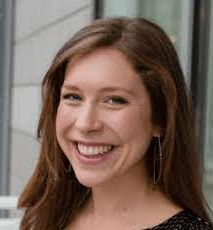
Elsa Henderson is a practitioner at the Converge Network and faculty at the Metavision Institute. She moves between the roles of network consultant, facilitator and educator supporting individuals and groups to deepen their capacity to collaborate for systems impact and find meaning even in the midst of uncertainty. Her background is in process-oriented psychology and anthropology, with an interest in phenomenology, systems thinking and consciousness studies.

Jannik Kaiser is co-founder of Unity Effect, where he leads the area of Systemic Impact Evaluation, grounded in the knowledge that evaluation can be participatory, meaningful and energising. His background is in sociology, with a continuous passion for complexity science, phenomenology and asking fundamental big questions about life.
In our conversations, we also allowed our minds to wander and our intuition to speak. In the end, it felt more like the topic of choice ‘chose’ us. And we could feel the depth and richness in it that is calling for further explorations.
To give one example: The image of the iceberg and choice as a process to align our values and principles and translate them into action. This aligns with the three levels of reality process-oriented psychology, namely (1) consensus reality, (2) Dreamland (inner worlds & imaginations) and the (3) Essence level (the non-dual pre-manifest field of ‘implicate order' as coined by Bohm. It also fits with Ken Wilber’s AQAL model, according to which each system has an interior (invisible) and exterior (visible) dimension.
An interesting exploration could be how individual and collective choices are connected. The iceberg is swimming in a vast ocean of water. Similarly, our individual choices are embedded in what we could call consensus reality or culture. Yet this consensus reality is currently being questioned, and the topic of choice could inform how we transition between such collective realities.
So stay tuned, there might be more coming up.
originally published at Unity Effect
Appreciate Network Weaver's library of free offerings and resources?
Donate below or click here
thank you!
From Learning to Doing
Many years ago I was teaching high school English on a small island in SE Alaska. I asked the class to compare a piece of literature to the story of the Three Little Pigs. Half of the class couldn't do the assignment because they had never heard of the story of the Three Little Pigs. That changed me forever.
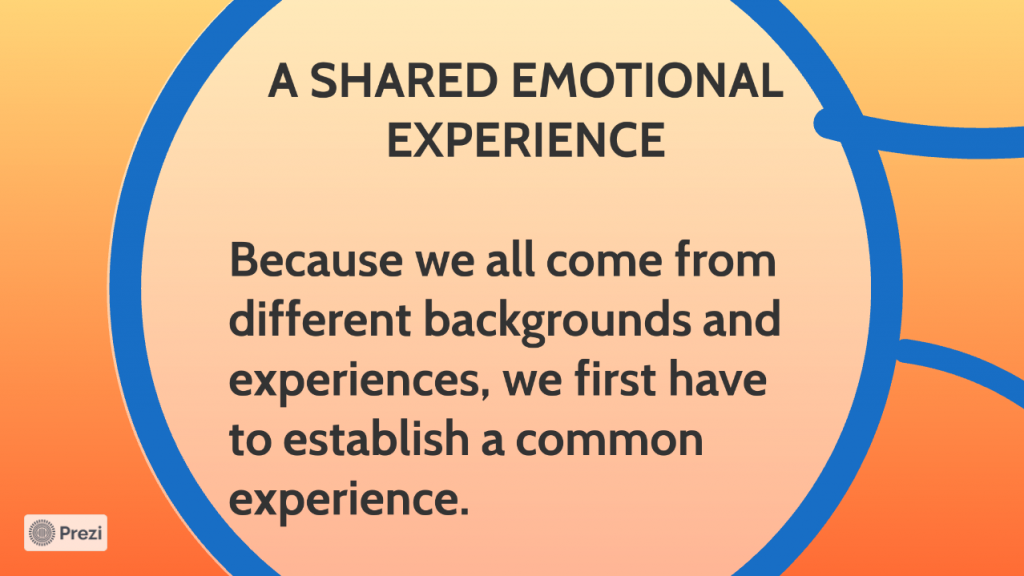
Without shared experiences, learning communities often talk past each other. Inevitably there is a judgement on one side or the other. Each learner brings his/her own experiences to a conversation and uses those unique experiences to make sense of things. Coming together as a learning community to sort through what we understood from something new that is introduced to us is sometimes very frustrating because of all the different experiences brought to the table. To help with that issue in almost any learning community, you can initiate a common experience/action for all participants. When an action is experienced together, suddenly there is more justice in the conversation. The playing field is leveled and the real conversation can begin.
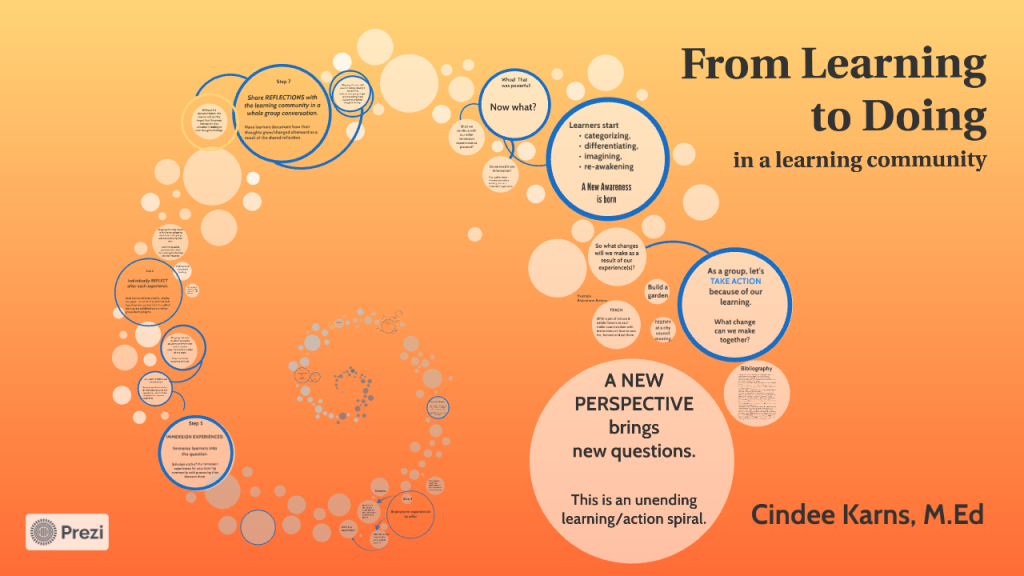
This is a depiction of how that process can be set up for any learning community. The condition is that the learning spiral never ends....every round goes higher, higher. The outcome is that participants almost always feel like they can act on their new knowledge and continue the learning cycle on their own.

Click HERE to access the "From Learning to Doing" resource. A slide presentation on how to create shared experience in a community to initiate actionable change.
Click HERE to access the slide show directly at prezi.com
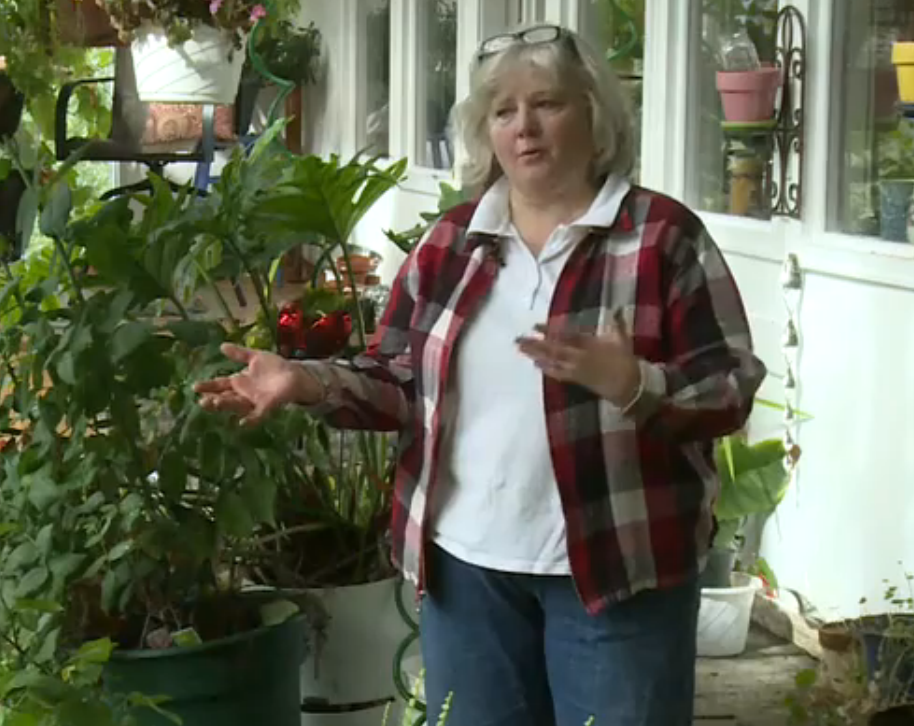
Cindee Karns, a life-long Alaskan, is a retired middle school teacher with a master's in Experiential Learning. She is founder/weaver of the Anchor Gardens Network, which is attempting to bring increased food security to Anchorage. She and her husband live in and steward Alaska's only Bioshelter
Appreciate Network Weaver's library of free offerings and resources?
Donate below or click here
thank you!
Governance is how we choose to be together
An illustrated story of liberatory governance practice
Storytelling — like governance — can take many forms.
When choosing new ways of being together, we begin with ourselves — in our bodies, hearts, spirits. The choice to be in governance rooted in mutual care is an embodied one. Once it rests within us, the practice begins.
Accordingly, the story of governance practice is a multi-sensory one. It takes shape in the colors, textures, voices, sounds, and sensations of our beloved communities — it is multi-dimensional.
Last year, a group of worldbuilders came together with a shared commitment to collective liberation — and the governance principles we’ll need to bring it into being. Together, we moved through a series of clinics to deepen our collective governance practice.
What follows is a constellation of words, images, and musical offerings to describe this journey into liberatory governance. These images are the work of our beloved Adriana Contreras Correal of On the Right Mind. Deep gratitude to Adriana for sharing her gifts with us.
We invite you to enjoy our practice playlist and delve into the story below…

Collective governance begins with a choice: to commit to the ways of being that enable all beings to thrive:

Transformation begins when it’s personal: once we’ve committed to collective governance, we begin by grounding in place. Our work begins at home:
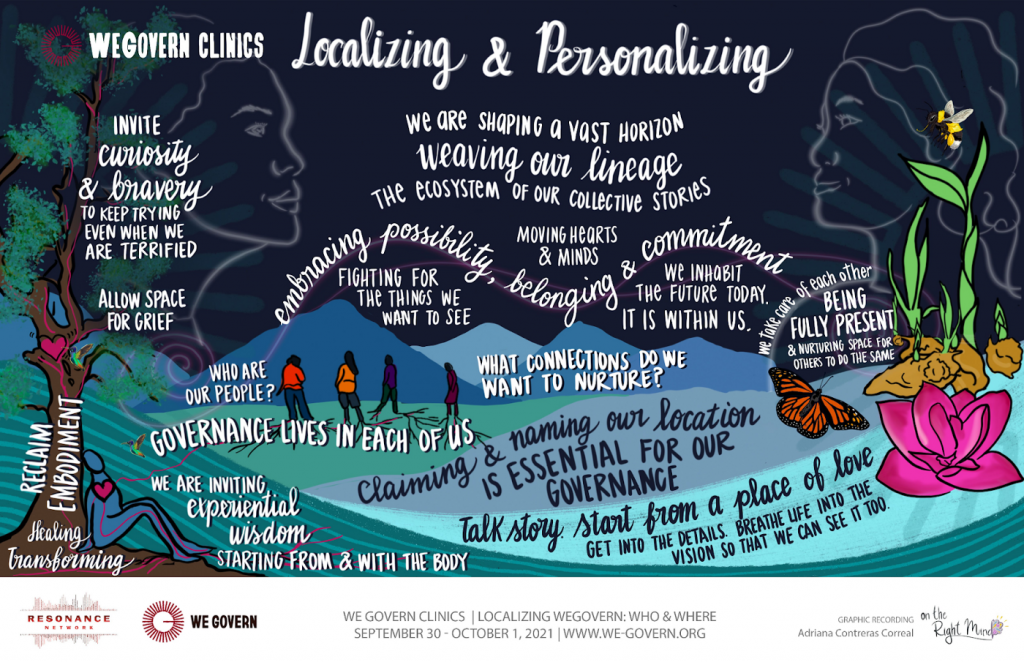
As our practice takes root, we continue illuminating the path toward what is possible, by narrating our visions for our communities into story:
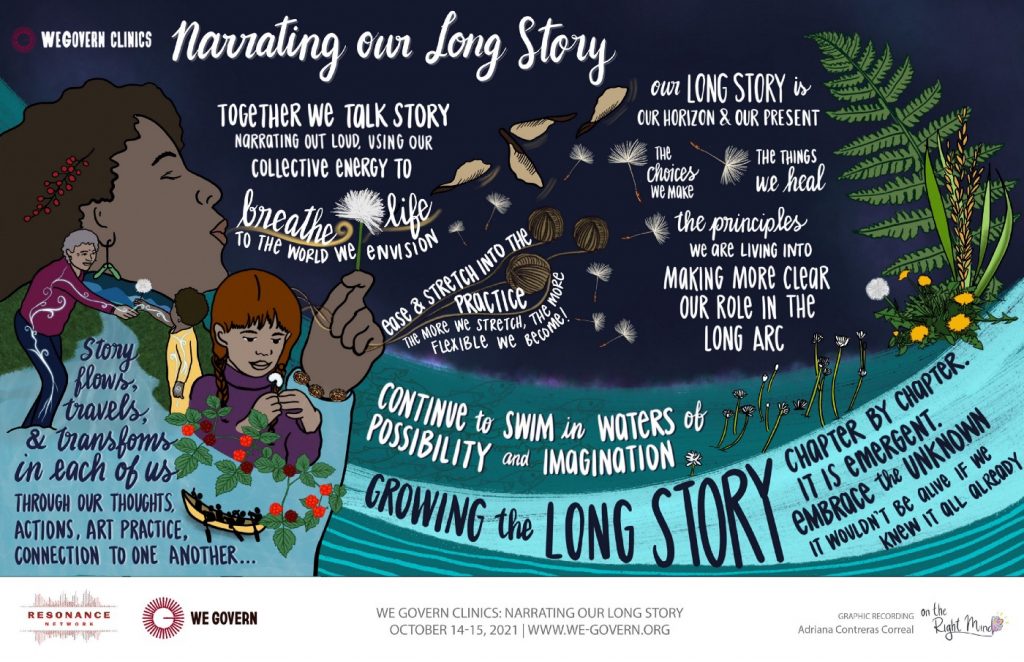
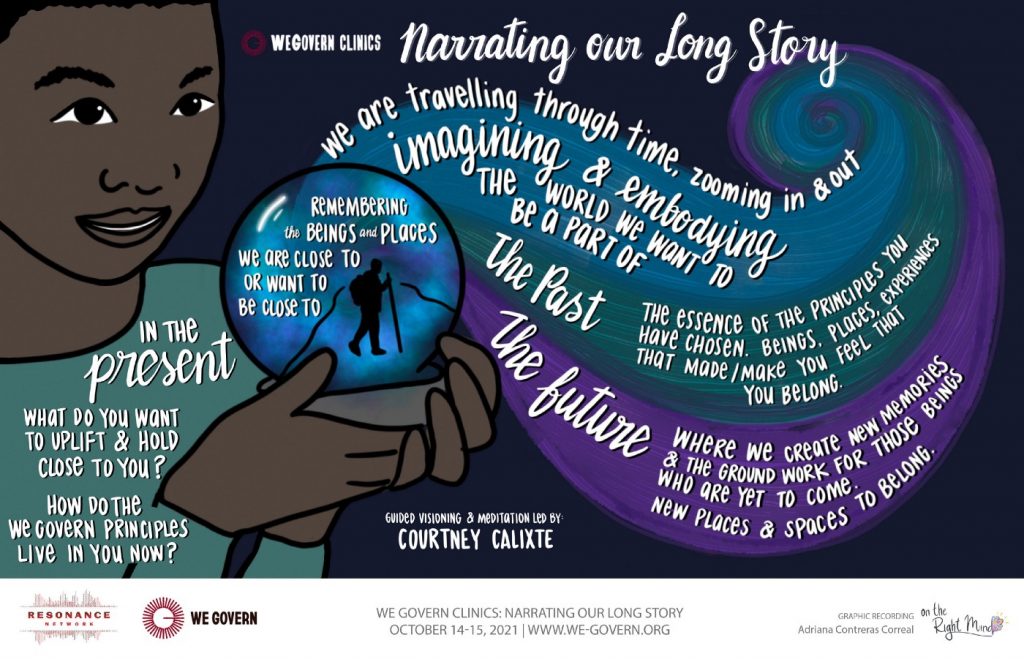
Holding close to our stories of liberatory futures, we focus in on policies and actions we will need to sustain a world beyond violence — a world where all beings can thrive:
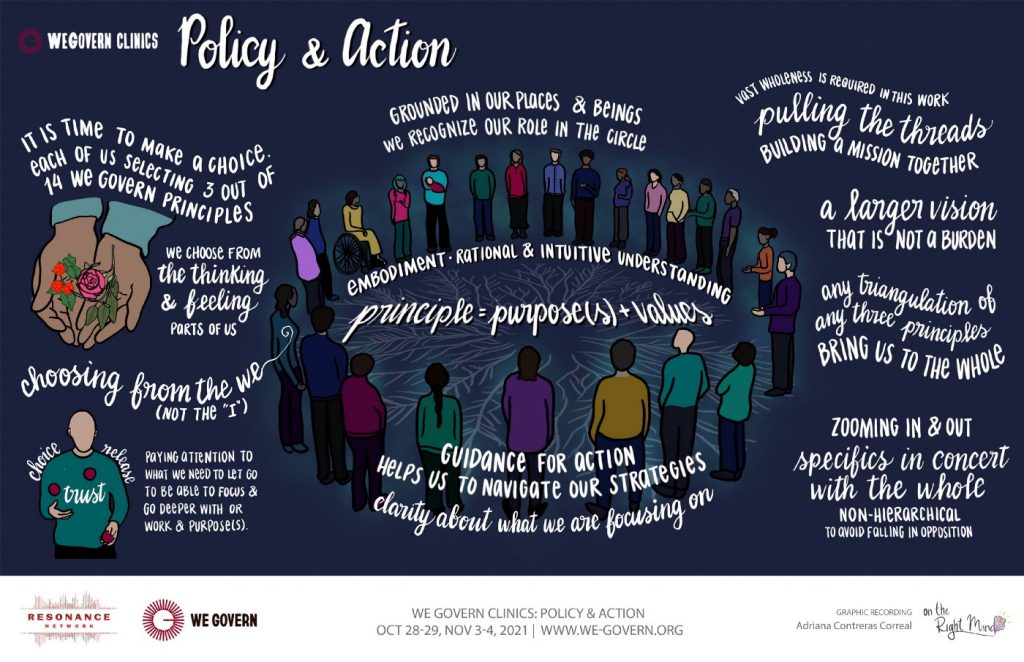

Originally published at Reverb
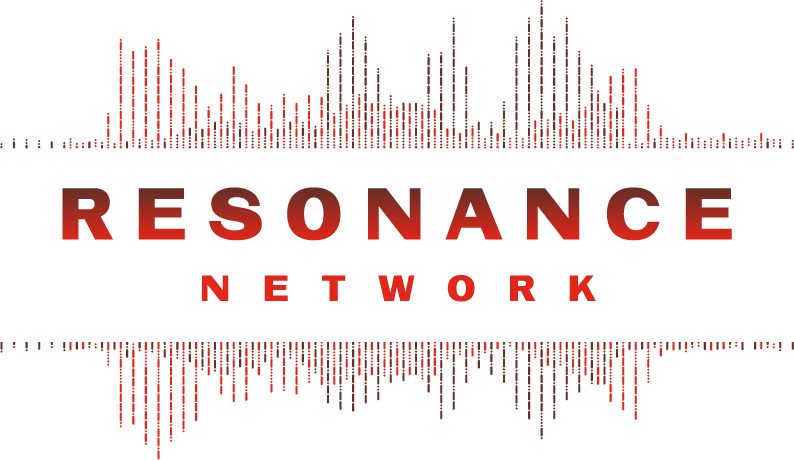
Resonance Network is a national network of people building a world beyond violence.

Network Weaver is dedicated to offering free content to all – in support of equity, justice and transformation for all.
We appreciate your support!
donate in the box above or click here
Adapting a network’s theory of change
Collective Mind hosts regular Community Conversations with our global learning community. These sessions create space for network professionals to connect, share experiences, and cultivate solutions to common problems experienced by networks.
On September 22nd, 2021 we met with Carri Munn from Context for Action and Amelia Pape from Converge for our first Community Conversation of the fall. Carri and Amelia shared their experiences collaborating with network teams to adapt Converge’s theory of change to their networks and the process and successes of co-creating a shared theory of change with network leaders.

Highlights from the conversation
Complex problems are by nature nonlinear and typically must be addressed from many angles at once. This is why networks, in their ability to connect and facilitate collective action between people and organizations, can be successful and impactful in creating system change in complex environments. As defined by our co-hosts, a theory of change describes how a network can create systemic change by harnessing the interdependence of the network system – its members.
The way networks create system change – or their theory of change — can often emerge in phases. The conversation outlined these phases, beginning with connecting the actors within the network system, working towards building trusting relationships and an understanding of members’ contexts. This is the foundation necessary to reach the coordination phase, when regular communication and coordination starts to occur between people within the network, people are supporting the work and each other, silos are starting to break down, and information, value, and learnings begin to flow from the connections that have been created. From here, the collaboration phase emerges and members begin to recognize a shared purpose within the larger system and opportunities to collaborate within it. It is these emergent collaborations that begin to create and perpetuate more and new collaborations and, eventually, system change and impact at scale.
This phased framework is a way to talk broadly about a network’s theory of change. However, network leaders often need a specific and contextual theory of change to effectively communicate to and strengthen the network. Our co-hosts shared an example of using this framework to support a network interested in transforming a broad theory of change to one that represented their network’s specific activities, as a means to communicate and collaborate more effectively with its members and stakeholders.
Using the phased theory of change framework — connection, coordination, and collaboration — our co-hosts described their process, which started with using surveys and conversations to gather information from the network about the challenges, barriers, and opportunities that existed within the network system in its current state, and to describe the optimal system impact, or the realized vision, they hoped to achieve. These became inputs for a virtual Mural storyboard session where they facilitated a smaller group of network participants to articulate what they hoped to create and achieve in each phase and how they viewed their roles and relationships within these phases. The storyboarding exercise was a way to help the network articulate how they would create the conditions for impact and collaboration to emerge that would be considered those of a healthy network and then use those outcomes as a tool to communicate with and bond the network.
What also emerged from this conversation was the critical role of network coordinators in theory of change processes. Coordinators are often the catalyst in orienting networks to see the bigger picture. As facilitators of a complex system, it often falls to them both, by necessity and design, to engage members in conversations about how they see themselves as part of a larger whole and how to contribute to transformational change in the network system.
Miss the session? View the recording here.
Sign up for the Collective Mind newsletter to receive these in your inbox!
Thanks again to our co-hosts, Carri Munn and Amelia Pape!
Get involved
Have your own experiences developing a theory of change? Tell us about it in the comments below.
Join us for the next Community Conversation!
Or email Seema at seema@collectivemindglobal.org to co-host an upcoming session with us.
original article published HERE
The illusion of hopelessness
The war in Ukraine is a symptom of something bigger— and within reach
In times of war, we are led to believe we are powerless.
We are told that violence is inevitable, an unfortunate part of the way things are. And that the way things are cannot change.
As world events have transpired over the last two weeks, this illusion has begun to splinter
* * *
Russian military forces invaded a sovereign nation on February 24th. Within days, the United States, the European Union, and other nations announced a series of economic sanctions on Russia. At the same time, countries of the European Union waived visa rules for Ukrainian refugees–allowing those fleeing war to enter the EU without having to seek asylum.
Homes across Europe have opened their doors to Ukrainians fleeing war, and President Biden announced that Ukrainian refugees would be welcome in the US “with open arms.”
These moves were swift and unprecedented. Rules that had long existed were replaced with new ones. Systems changed as people and countries moved together in response to a humanitarian crisis.
How quickly rules can change when we want them to.
How malleable systems can be when we agree on what is right.
* * *
Russia’s attack on Ukraine, like all wars, is a symptom of a worldview of domination and extraction.
Like all wars, it exists amid other symptoms and consequences of this worldview: modern dependence on oil and the interests of the fossil fuel industry; unmistakable racism at the Ukrainian border as Africans were systematically turned away.
And the global coordination to condemn Russia’s attack and support the Ukrainian people was made possible, in part, by white supremacy: Western sensibilities were stirred by seeing white refugees. Meanwhile, escalating humanitarian crises in Afghanistan, Palestine, Yemen, Syria, Somalia, and Ethiopia have not been met with the same swiftness.
Imagine a world where all people in need were met with dignity and humanity. Where violence and harm was met with resounding care.
Imagine systems of governance that hold these values above all others.
* * *
In times of war, we are led to believe we are powerless by those who benefit from our silence. We are led to believe our collective systems cannot change by those who benefit from the way things are. Meanwhile, worldviews of domination and extraction continue to shape our reality and perpetuate harm.
As the war in Ukraine has unfolded, we’ve also seen a wave of dehumanizing legislation against queer and trans young people, increasing threats to reproductive justice, and an alarming epidemic of homelessness continuing in the US, all while COVID cases spike in Europe and Asia.
When we understand that all violence is a symptom with the same cause, we can also see that we are not just spectators to what is happening — in Ukraine or right beside us.
There is hope, and the hope is us.
* * *
“There is never time in the future in which we will work out our salvation.
The challenge is in the moment; the time is always now.”
~James Baldwin
Resonance Network is a national network of people building a world beyond violence.
Originally published 3.16.22 at Reverb
Social Change Networks Playbook
The challenges that the world faces today, from climate change to highly unequal economic and social structures cannot be solved by one organisation, government or institution alone. We need to collaborate to share learnings, scale innovations and build our collective capacity to bring about social impact.
The social change networks playbook is the product of a participatory learning journey that we as a group of network practitioners, funders and researchers went on together. Together, we made sense of some of the key questions, challenges and opportunities of impact networks, as well as good practices in facilitating and funding networks. This playbook is our humble contribution to share the learnings that emerged from our journey and support fellow practitioners and funders who develop networks for social impact.
We see these networks as groups of individuals and organizations that harness their connections and relationships towards a shared purpose, to learn together and collaborate to achieve a positive impact on a complex societal or ecological challenge.
There is a rich and growing body of both lived experience and research showing that collaboration through networks can enable learning, cultivate awareness, pool resources and widen access to opportunities. Impact networks can be critical to bringing about systems change across sectors, whether this is in education, youth development, gender equality or philanthropy. However, there are still many questions about how networks can become more thriving, adaptable and resilient:
- How do we most effectively take networks from talk to action?
- How do we convey the value of networks?
- How can we better democratise access to networks?
- What are good practices to build networks?
- How can networks drive systems change?
- How do we know when networks are working?
Through this playbook, we begin to share ideas and frameworks to start addressing some of these questions. The playbook is:
- A Practical Guide that is recognizable, useful and immediately applicable.
- A Curated Overview of resources and methods to support deeper learning.
- An Honest Invitation to experiment with collaboration and alignment.
In each chapter we invite you to use the resources and findings we share to reflect, learn and build strong networks in your contexts We acknowledge that we merely scratch the surface of these questions in this playbook. The more we learned throughout our journey, the more questions arose. We, therefore, invite you to also engage deeply with the reflective questions and additional resources.
Here is an overview on the chapters on different puzzle pieces that are important to consider when developing social change networks:
And, here is what other network weavers, facilitators and capacity builders said:
"The playbook is a valuable resource for network leaders and practitioners. Anyone working to create change through collaboration will be well served by reflecting on the questions and exploring the wealth of resources contained within. ” - David Ehrlichman
"Helpful and practical! This playbook is a great reference for practitioners or anyone who wants to learn how to better understand networks for impact and how to develop them. Anyone working with and “developing social impact networks should have this by their side!” - Kerry Lea Forrester, Lecturer on networks at Tilburg University
“Insightful and reflective of the dynamism of impact networks, the playbook offers clear and accessible guidance for network practitioners and funders alike, using a rich variety of real-world examples and resources. Recommended for stakeholders at any stage of their impact network evolution.” - Gwen Beeman – Small Foundation
CLICK HERE to download a PDF of Social Change Networks Playbook.
We hope you will find it as useful in your own work to co-create thriving networks. It is our collective intention and sincere hope that this playbook contributes to our collective ability to realize a more flourishing world for all.
In connection,
The network learning journey cohort, InHive & the project team.
inHive works closely with partners to develop networks that enable communities to leverage existing resources and amplify impact on their local and global communities. We work with partners from around the world – from school networks in Pakistan, to youth leadership programmes across Africa, to global funders – to build skills and expertise, design network structures, and facilitate participatory methods and collaborative activities for shared engagement, learning, and impact.
Waging Peace with Fierce Love : a 3-Part Workshop Series for feminist changemakers
What will it take to transform conflict, to ensure our movement building and changemaking is fueled by fierce love over fear? How can we resource ourselves and each other with transformative, life-giving power?
This three part workshop series is an opportunity for feminist changemakers to explore how to root, rise, and pollinate the new ways of being necessary to wage peace, transform conflict, and strategically bring to life our visions for a transformed world.
The three sessions are part of the whole, and are intended build on each other.

These sessions will create a welcoming and grounding embodied practice space to help changemakers root in and remember our personal and collective purpose, identify habits to interrupt, and sustain generative power.
They build on the kitchen-table chat and embodied practice session we held earlier in 2021 with feminist changemakers from around the globe, Waging Peace with Fierce Love.
Recordings of the sessions will be available
Wednesdays in 2022 - January 26 & Feb 2 & 9
For more information and to register, CLICK HERE
visit rootrisepollinate.us and ig @rootrisepollinate to stay tuned?
Transforming Impact : how evaluation and impact are shifting
Given the complexity and depth of the world’s problems, evaluation theories, practices and processes are shifting to better respond to that complexity. The argument goes something like this: problems in our world are increasingly complex, current approaches that fund individual projects (requiring clear outcomes, and evaluating progress towards those outcomes) have actually inhibited the kind of innovation and transformation needed to completely shift the many interrelated systems that make up our world. This means concepts such as evaluation and assessment of impact need to shift as well.
On November 10th, a panel of 8 great minds had a dialogue on the ways that impact measurement and evaluation are shifting.
The panelists were.
- June Holley, Network Weaver
- Glenn Page, SustainaMetrix
- Motaz Attalla, Garfield Foundation
- Charles Kojo Vandyck, West Africa Civil Society Institute
- Gurpreet Singh, Skoll Foundation
- Mark Cabaj, From Here to There
- Liz Weaver, Tamarack Institute
- Habiba Nabatu, Lankelly Chase Foundation
Below is a link to a video the dialogue:
Key takeaways from the session were:
Some of the key themes
- Insights and breakthroughs come from investing proper time in reflection and learning, which we're not currently doing.
- Power dynamics are embedded into evaluation systems through inflexible questions which signal a lack of trust. The process needs to be more participatory since it oftentimes stands in contradiction to an equity approach.
- We need to continually ask: is this process community owned and run?
- We need to make public the wild assumptions that sit behind cause and effect paradigms.
- Though conversations are becoming more progressive, the practices don't yet reflect this.
Beacons of good practice
- Having a vision as a north star
- Slashing indicators as key questions in application forms
- Prioritising learning and quantifying instead of impact measurement
- Shifting the work to the funder, eg. taking responsiblity of finding out what grantees are doing by what's been reported online
- Decentralizing impact analysis & decision-making through lean and frequent mechanisms
- Making data openly available so people can review and assess as they please
Some nice quotes
- "Indicators will shift because life happens" (Motaz, Garfield Foundation)
- "Learning is how we shift, adapt and change in real time" (Liz, Tamarack Institute)
- "I've never seen people read M&E reports and be inspired...we need to use stories" (Charles, WACSI)
- “We need to get rid of ‘zombie’ practices – those that are dead but still being used” (Mark, From Here to There)
- "The best learning happens in learning communities" (June, Network Weaver)
We'd also like to share a chart that summarizes how evaluation and impact assessment are shifting. It's a work in progress so please feel free to add comments and suggestions using the comment feature.
If you're interested in being engaged in further impact initiatives with us please fill in this 60 second survey.
If you'd like to keep the links to the video and chart offerings on file, download the free resource HERE.
2021: deep transformation or shallow change?
2021 is pivotal to creating the future we want. We know that we have less than a decade to address the climate crisis, and that the commitments made this year will determine whether that is possible. We also know that we have an unprecedented opportunity to steer the investments that have been unlocked to deal with COVID-19 recovery in order to shape a different economy. This is the moment in time to work in integrated ways across climate, biodiversity and equality to drive transformational change, and to better prepare ourselves for ongoing disruption. But will we take the opportunity?
Forum for the Future’s Chief Executive, Dr Sally Uren, explores what is needed as the sustainability movement hits a vital inflection point.
As the crushing climate, social and biodiversity crises intensify, and the social, political and economic fallout from COVID-19 continues, the world stands at a crossroads. Will we ultimately capitalise on this opportunity for a reset - using the pandemic recovery to lay the foundations for transformative change capable of creating a just and regenerative future? Or will we continue to address the multiple systemic issues we face with small scale, isolated interventions that fail to address the root causes?
Put more simply: will we sow the seeds of deep transformation or continue with shallow change?
Even before the pandemic, the world was beginning to wake up to the urgency of the challenges we face, and the limited window of opportunity to address them. The shock of the COVID crisis has in some ways deepened that urgency. It has shone a light on how interconnected the challenges we face are - and that solutions must simultaneously address not just the climate emergency, but also growing inequality and habitat and biodiversity loss.
In our Future of Sustainability report published in late 2020, Forum called out four possible trajectories forward from the COVID crisis based on the mindsets we have seen proliferate over the past year. One of those trajectories, the Transform trajectory, offers the potential of a world where both people and planet can thrive into the long-term. It’s here that norms and narratives begin to shift to allow the emergence of a different global economy, one that is rewired to deliver to a set of goals much broader than short-term profit maximisation. An economy where businesses are rewarded for delivering solutions to some of our grand challenges, and where philanthropy channels its billions into solving for systemic challenges, not simply plastering over the relentless shocks that come from our collective failure to reconfigure the systems we rely on.
Since we published our report, there have been promising signals that the Transform trajectory is beginning to emerge. Financial firms responsible for $70 trillion are now signed up to net zero targets, with the real progress manifesting in what we mean by ‘net zero’; the EU for example is pushing for these targets to include a just transition Elsewhere, in a move that caught many off guard, the International Energy Agency (IEA), a traditional supporter of the oil and gas industry, has just called for an end to investment in fossil fuels.
These green shoots of deep change are not just apparent in business. The UNDP is urging investment patterns to change such that capital flows into the root causes of our challenges. This involves ‘reframing’ issues, pointing out that a health system designed to promote wellbeing, for example, would look very different from a system designed to treat ill-health. Meanwhile many philanthropic funders are examining how their own practices need to shift to drive more redistributive and regenerative approaches.
These shifts also coincide with a growing acknowledgment among mainstream civil society that the world can’t go back to where it was before. People are mobilising, marching the streets to call time on long-standing ethical, social and environmental issues that have for too long gone unchecked. Many grassroots movements are driving real changes in attitudes to diversity and inclusion.
Promising, but…
This momentum is both encouraging and tantalising, but there remains a real risk of a shallow transition - one where we address some specific problems and their symptoms in isolation, but fail to tackle the root causes; where we tweak around the edges but don’t fundamentally transform our systems. Why? Because there are other versions of our future that are unfolding alongside Transform, and these versions are predicated on the current version of our economy, where power, profit and success are tilted in the favour of the few.
The Transform trajectory is trying to fight through the boundaries of a set of systems, from food to energy to finance. These systems were established to drive economic growth, without proper and due attention to environmental or social value. They are entrenched and have inherent energy that will keep pulling them back to how they were established. All of us in these systems will feel the forces, economic and societal, to push us back to where we were pre-COVID.
Yet now is the moment to push forward, to overcome any desire to go back to what we knew, to work with the activating voices and organisations for change in our systems, to work with the resisting voices to make the case for change and sweep them along with us. Or to leave them behind. It’s also the moment we must all re-examine our approaches, to dig deep and understand what radical disruption and deep transformation – when seen as a doorway to a new world – could offer us.
What will be required to drive this deep transformation?
At Forum, we are calling for three things:
1. A reset of ambition.
Every great movement has a compelling “north star”. The original north star of sustainability was a world where we live in balance with the planet - where both people and planet can thrive.
While the essence of this vision still holds true, the pathways toward that north star have become confused - firstly by the idea that this vision of sustainability is compatible with an economic model that prioritises infinite growth of consumption and production.
And secondly, by the idea that incremental change - tweaking around the edges of our current systems, or simply doing less bad in the world - will somehow get us there.
We need to redefine what we mean by sustainability, pushing our aspiration further. If we are truly to create the conditions in which people and planet thrive, then we need to start to design for a just and regenerative future, and challenge every actor in our economy and society to examine what their role in creating that future looks like.
And we need to recognise that setting our sights on this new north star will mean shifting from the ‘build back better’ response to the economic and social consequences of COVID-19. Instead, we need to be ‘building forward’ - which means fundamental shifts in both what we define as important, and in the goals of our systems. These goals must move away from the current economic model towards a distributive one that has the principles of social equity and a just transition to a zero-carbon future at its heart.
As we approach the defining moment of the climate COP, set to take place in Glasgow later this year, we should also be looking beyond net-zero, and aspiring to ‘net-zero plus’, with a view to addressing planetary health, social equity and the capacity of all our systems to regenerate and thrive
2. A focus on ensuring just transitions
For us to achieve this bold vision, it is clear that the coming decade will require a suite of fundamental transitions in the key systems on which we rely and that these transitions will not succeed unless they address both social and environmental challenges.
The perceived dichotomy in which we could focus only on one or the other, or through isolated initiatives, never rang true, but COVID-19 has now fully exposed it for the falsity it is. The pandemic has brought into stark focus just how interconnected planetary and human health are, and that one simply cannot thrive without the other.
Our transitions must fundamentally tackle the root causes of the structural inequalities we face and ensure disadvantaged communities are actively involved in shaping the future. In the radical transitions we know need to happen across our energy systems, this will not be exclusively about jobs and retraining, but also about shifting how costs, risks and benefits are shared. And of course, we must recognise that this is not just true for energy systems, but also across our food systems and other commodity supply chains.
At the same time, success will require working across historic silos – the boundaries between, businesses and other organisations, sectors and change-actors must come down. Net zero strategies should not just be about carbon outcomes, but equality and livelihoods
3. Building capacity for systemic and joined-up thinking
For all of this to work, and ensure that the changes we seed now are long-lasting, we need to change the way we approach problems and solutions.
We must invest in building capacity among key influencers and change makers for more systemic approaches to problem solving and collaboration. These approaches must recognise the complexity and inter-relationships within our systems. They must help us to look beyond quick fix solutions and to focus instead on the deep levers of change: our views, our values, our mindsets – and how these need to shift to acknowledge the deep interconnections between planetary health, human health and the health of our economy and society.
This will be the ultimate unlock to driving deeper, lasting change.
An overdue reinvention
I began by presenting a question: deep transformation or shallow change? The choices we make, right now, will determine the trajectory we take, and whether or not Transform becomes the dominant version of our future. At Forum, we believe that a shallow transition is not viable; after all, the ultimate costs of shallow transitions will far outweigh those of deep transformation in the long term. Fundamentally, we cannot thrive on a failing planet.
It’s within our grasp to reinvent the way the world works. We’re long overdue in doing it.
Read more:
- The mindset of a good business leader for an inclusive future
- From pioneering ambition to game-changing goals
- More than words on a placard: how do we take ‘systems change’ from idea to action?
Sally Uren is Chief Executive at Forum for the Future with overall responsibility for delivering Forum’s mission to accelerate a big shift towards a sustainable future by catalysing transformational change in global systems. This involves working with leading global organisations, including businesses such as Olam and Walgreens Boots Alliance, Foundations, such as the Laudes Foundation, and membership organisations, such as the United Nations Global Compact, both in one to one partnerships, and also as part of multi-stakeholder collaborations designed to address complex challenges in systems as diverse as food, energy, apparel and shipping.
Originally published at Forum for the Future


